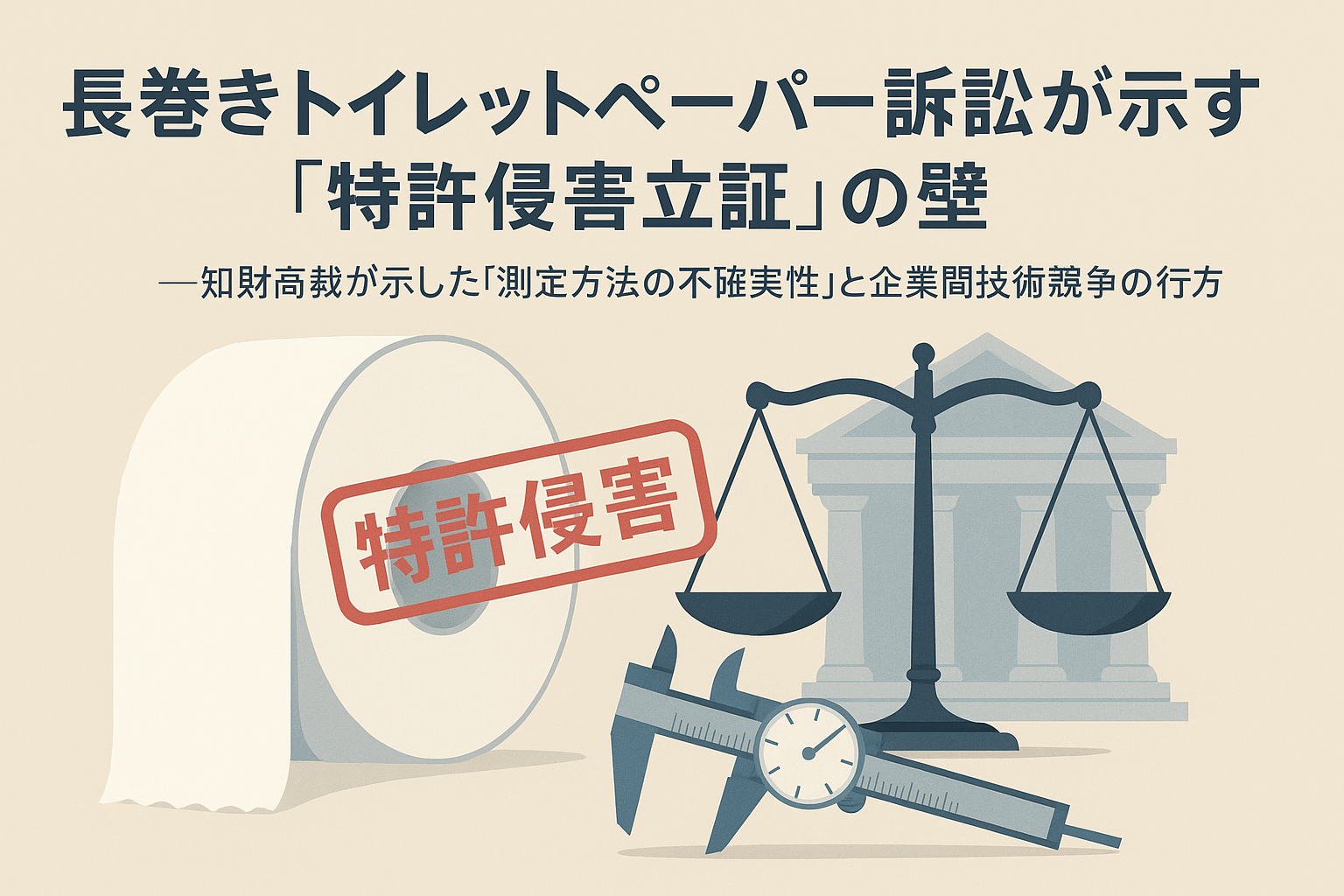Overview of the Ruling
Nippon Paper Crecia (known for the “Scottie” brand) filed a lawsuit against Daio Paper (maker of the “Elleair” brand), alleging that Daio’s “i:na Toilet Tissue 3.2× Roll” infringed its patent covering embossing technology designed to maintain a comfortable texture even in extra-long rolls.
However, following the Tokyo District Court’s decision, the Intellectual Property High Court on October 8, 2025, also ruled that no patent infringement occurred and dismissed Crecia’s appeal.
The court pointed out that under Crecia’s “measurement method,” it was unclear whether the embossing depth of Daio’s product fell within the patented range—meaning the essential element of technical identity, the core of infringement analysis, could not be proven.
The Difficulty of Patent Suits Where “Measurement Methods” Become the Issue
This case did not hinge on whether Daio’s product was a simple imitation, but rather on quantitative parameters—specifically, the minute depth of surface embossing.
To prove patent infringement, the claimant must objectively demonstrate that the accused product falls within the technical scope defined by the patent claims.
However, when the measurement methods or criteria are ambiguous, the court cannot reliably determine whether infringement has occurred.
In particular, for products like paper—whose physical properties can vary subtly depending on environmental factors such as humidity and processing conditions—differences of just a few micrometers can determine whether a product lies inside or outside the patented technical scope.
This ruling thus underscores a harsh reality: “Patents with insufficient measurement precision are less likely to be legally protected.”
“Long-Roll” Competition and Technology Strategies in a Mature Market
In the everyday consumer market for toilet paper, companies now compete fiercely through innovations in roll length, softness, and texture—making these features the new frontier of technological competition.
For consumers, a “longer roll” may simply mean fewer replacements, but for manufacturers, it represents the culmination of advances in papermaking, compression, and processing technology.
The confrontation between industry leaders Crecia and Daio can therefore be seen less as an act of patent enforcement and more as part of a strategic display of technological superiority.
This outcome highlights a core challenge in mature industries: finding the right balance between asserting intellectual property rights and continuing technological innovation.
Key Takeaways from the Decision
- Patents with ambiguous measurement conditions or definitions are difficult to enforce.
- Even when products look similar, unclear numerical parameters can become the central issue.
- The IP High Court tends to rule that uncertainties work to the detriment of the patent holder.
- Consistency between technical documentation and testing methodology determines evidentiary credibility.
For companies, the focus should thus shift from merely “obtaining patents” to ensuring that their inventions are quantifiable and provable in legal and technical terms.
Between Rights and Proof
Although the Intellectual Property High Court’s decision was unfavorable to Nippon Paper Crecia, it illuminates a deeper challenge—how to align R&D practices with patent strategy.
In a field where differences of just a few micrometers in paper thickness can trigger legal disputes, visual similarity does not necessarily equate to patent infringement.
This case ultimately illustrates the delicate boundary within the patent system: where protection ends and free competition begins.

